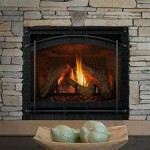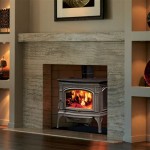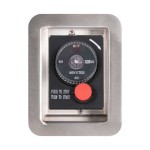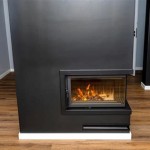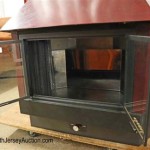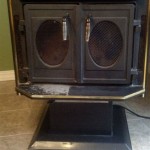Fireplace Ignition Systems: A Comprehensive Overview
Fireplace ignition systems represent a crucial component of modern fireplaces, facilitating the safe and efficient lighting of fires. Over time, these systems have evolved significantly, progressing from simple manual methods to sophisticated electronic and remote-operated mechanisms. Understanding the various types of fireplace ignition systems, their operational principles, and associated safety considerations is essential for users, installers, and maintenance professionals.
The primary function of a fireplace ignition system is to introduce a controlled ignition source to the fuel, which may be wood, gas, or other combustible materials. The reliability and safety of the ignition system directly impact the overall performance and safety of the fireplace. A poorly designed or malfunctioning ignition system can lead to incomplete combustion, gas leaks (in gas fireplaces), or even dangerous explosions. Therefore, selecting the appropriate ignition system for a specific fireplace application and ensuring its proper installation and maintenance are paramount.
Types of Fireplace Ignition Systems
The types of fireplace ignition systems are diverse, each offering unique advantages and disadvantages in terms of ease of use, efficiency, and safety. A primary distinction lies between manual and automatic ignition systems. Manual systems typically involve a user-operated method for initiating the flame, while automatic systems provide a more hands-free experience. The following sections detail some of the most common types of fireplace ignition systems.
Standing Pilot Ignition Systems: These systems represent a traditional approach to gas fireplace ignition. A small, continuously burning pilot light provides the ignition source for the main burner. The pilot light is constantly fueled by a small amount of gas, ensuring that a flame is always available to ignite the main burner when the thermostat calls for heat. This system is relatively simple and inexpensive to implement but consumes a continuous supply of gas, even when the fireplace is not in use. This can lead to higher energy bills over time. The pilot light also generates a small amount of heat, which may be undesirable during warmer months. Furthermore, standing pilot systems are more susceptible to being extinguished by drafts, requiring manual relighting.
Intermittent Pilot Ignition (IPI) Systems: IPI systems improve upon the efficiency of standing pilot systems by eliminating the need for a continuously burning pilot light. Instead, the IPI system uses an electronic spark igniter to light the pilot flame only when heat is required. Typically, a thermocouple or flame sensor confirms the presence of the pilot flame before the main burner is activated. Once the desired temperature is reached, the main burner and the pilot flame are extinguished, conserving fuel. This type of system significantly reduces gas consumption compared to standing pilot systems. IPI systems typically require a power source, either through a direct electrical connection or batteries. They are also more complex than standing pilot systems, involving electronic components that may require occasional maintenance or replacement.
Direct Spark Ignition (DSI) Systems: DSI systems represent a further advancement in gas fireplace ignition technology. Unlike IPI systems, DSI systems eliminate the pilot light altogether. Instead, an electronic spark directly ignites the main burner. When the thermostat calls for heat, a high-voltage spark is generated between two electrodes positioned near the burner. This spark ignites the gas flowing to the burner, initiating the flame. A flame sensor monitors the presence of the flame, and if the flame is not detected within a specified time, the gas supply is shut off for safety. DSI systems offer the highest level of energy efficiency among gas fireplace ignition systems, as they only consume gas when the fireplace is actively producing heat. Similar to IPI systems, DSI systems require a power source and are more complex than standing pilot systems.
Electronic Ignition Systems for Wood-Burning Fireplaces: While primarily associated with gas fireplaces, electronic ignition systems are also available for wood-burning fireplaces. These systems typically employ an electric arc or a heating element to ignite kindling or small pieces of wood. They provide a convenient and efficient way to start a wood fire, eliminating the need for manual kindling and lighter fluid. Electronic ignition systems for wood-burning fireplaces can be particularly useful for individuals with mobility issues or those who prefer a more hands-free approach to fire starting. These systems often include safety features such as automatic shut-off timers to prevent overheating. They typically require a dedicated electrical outlet near the fireplace.
Match Light Systems: This is the most basic type of ignition system, generally used with gas fireplaces and fire pits. A manual gas valve releases gas into the burner while the user lights the gas with a long match or lighter. This system is the least expensive and easiest to maintain but requires caution when lighting to avoid burns from the initial burst of flame. There are no electronic parts, so malfunctions are rare, but proper gas line maintenance is essential to prevent leaks.
Advantages and Disadvantages of Different Systems
Different fireplace ignition systems have distinct trade-offs. For example, standing pilot systems offer simplicity and reliability but at the cost of higher fuel consumption. IPI and DSI systems offer improved energy efficiency but are more complex and require a power source. The choice of ignition system depends on individual priorities and the specific characteristics of the fireplace installation. Each type of system also has its own unique set of maintenance requirements, impacting the long-term cost of ownership.
Considerations should also be given to the specific application. A fireplace used infrequently might benefit from a simple standing pilot system, prioritizing ease of use over energy efficiency. Conversely, a fireplace used frequently as a primary heat source would likely benefit from the energy-saving features of an IPI or DSI system. Furthermore, regional regulations and energy codes may influence the permissible types of ignition systems in new installations or renovations.
Safety concerns also play a crucial role in choosing an ignition system. Systems with automatic shut-off features in case of flame failure are generally considered safer than those without. Routine maintenance and inspection of the ignition system are essential to ensure its continued safe and reliable operation. This includes checking for gas leaks, inspecting wiring connections, and ensuring proper ventilation.
Safety Considerations and Maintenance
Safety is paramount when dealing with any fireplace ignition system. Adhering to manufacturer instructions for installation, operation, and maintenance is critical. Improper installation or maintenance can lead to hazardous conditions, including gas leaks, carbon monoxide poisoning, or fires. Regular inspections by qualified technicians are recommended to identify and address potential safety issues before they escalate.
Gas Leak Detection: Gas leaks are a significant safety concern with gas fireplaces. A gas leak can lead to a fire or explosion. If a gas odor is detected, it is crucial to immediately turn off the gas supply to the fireplace, evacuate the premises, and contact a qualified gas technician or the fire department. Never use an open flame to detect a gas leak; instead, use a gas leak detector or a soapy water solution. Regular inspection of gas lines and connections is essential to prevent gas leaks. This includes checking for corrosion, damage, or loose fittings.
Carbon Monoxide (CO) Detection: Carbon monoxide is a colorless, odorless gas that can be produced by incomplete combustion in fireplaces. CO poisoning can be fatal. It is essential to install carbon monoxide detectors near fireplaces and in other living areas of the home. Detectors should be tested regularly to ensure they are functioning correctly. If a CO alarm sounds, immediately evacuate the premises and call emergency services. Ensure adequate ventilation is provided when operating a fireplace to prevent the buildup of CO.
Regular Inspection and Maintenance: Regular inspection and maintenance of the fireplace ignition system are crucial to ensure its continued safe and reliable operation. This includes cleaning the burner assembly, inspecting the venting system for obstructions, and checking the integrity of electrical connections. A qualified technician should perform a thorough inspection of the fireplace at least once a year. This inspection should include a check of the gas pressure, burner operation, and safety controls.
Electrical Safety: Electronic ignition systems rely on electricity. Ensure that all electrical connections are properly grounded and that wiring is in good condition. Avoid overloading electrical circuits. If any electrical shocks are experienced when operating the fireplace, immediately disconnect the power and contact a qualified electrician. Never attempt to repair electrical components without proper training and experience.
Proper Ventilation: Proper ventilation is essential for safe fireplace operation, regardless of the ignition system. Ensure that the fireplace chimney or venting system is clear of obstructions and that it is properly sized for the fireplace. Insufficient ventilation can lead to the buildup of carbon monoxide and other harmful gases inside the home. Regular inspection and cleaning of the venting system are necessary to maintain proper ventilation.
In conclusion, fireplace ignition systems are diverse in their functionality and safety. While each type offers particular advantages, understanding the specific operational and maintenance requirements are key to the safe operation of any fireplace ignition system.

How Electronic Ignition Ipi Fireplaces Work

Fireplace Ignition Systems Explained Starfire Direct

Electronic Ignition Gas Fireplace Valve Kit Firepit Outfitter Fire Pit

A Simple Guide To Gas Fireplace Ignition Types Montigo

How Gas Fireplaces Work With An Ipi Vs Milivolt Ignition System Kozy Heat

Electronic Ignition

Fireplace Millivolt Electronic Ignition Valve Kit For Use With A Wall Switch 82k Btu

Why Some Gas Fireplaces Always Have A Flame And Don T

36 Tahoe Premium Direct Vent Fireplace Electronic Ignition Empire

Gas Log Ignition Systems Which One Is Right For You Episode 37 Experts In Fire
Related Posts

